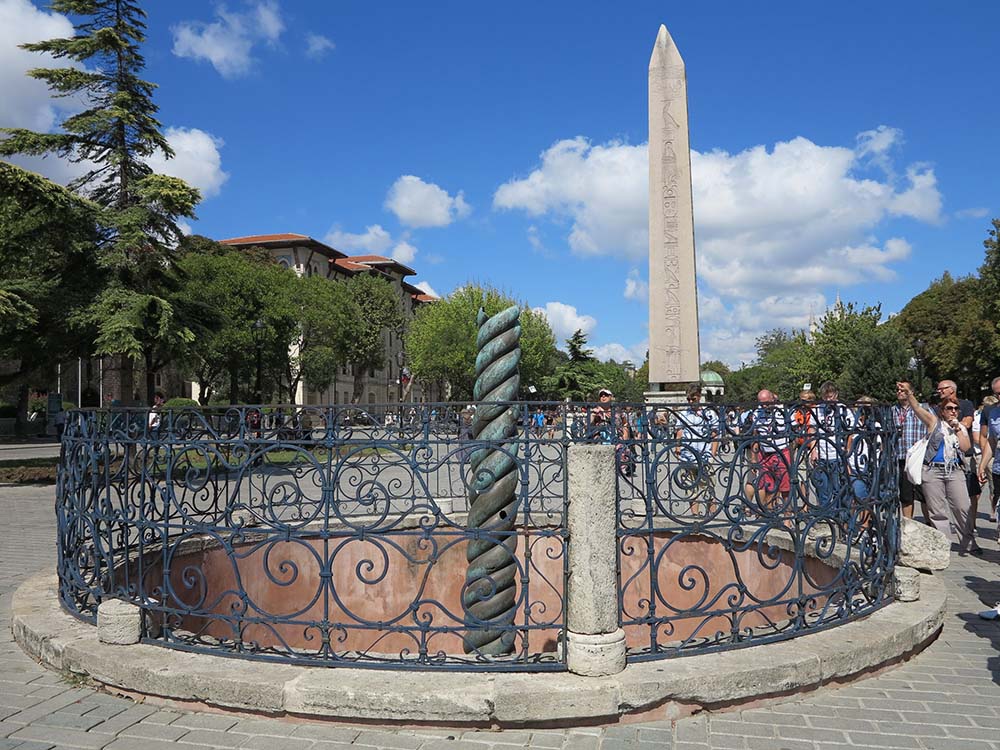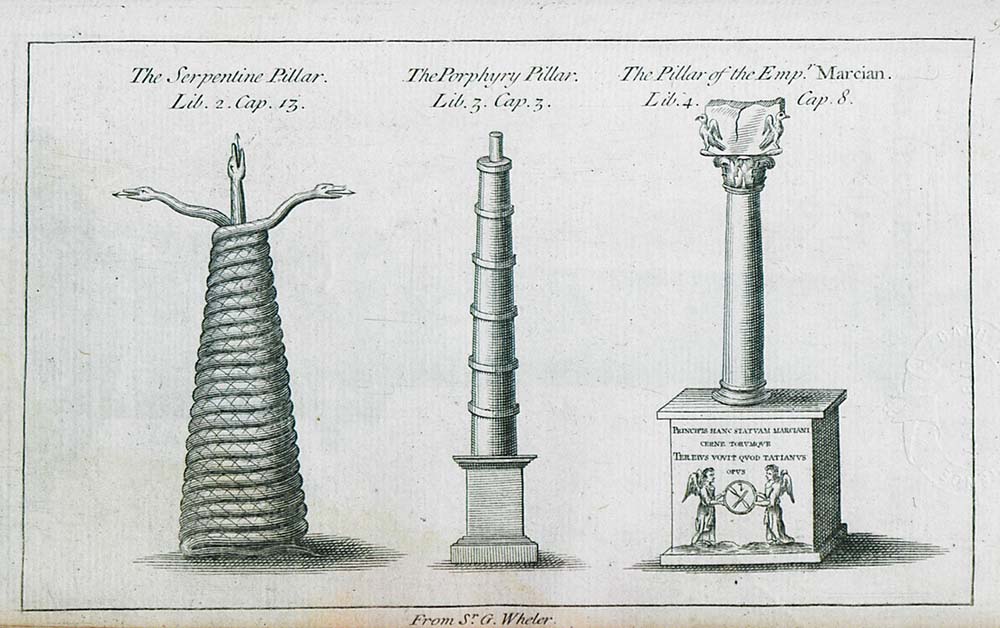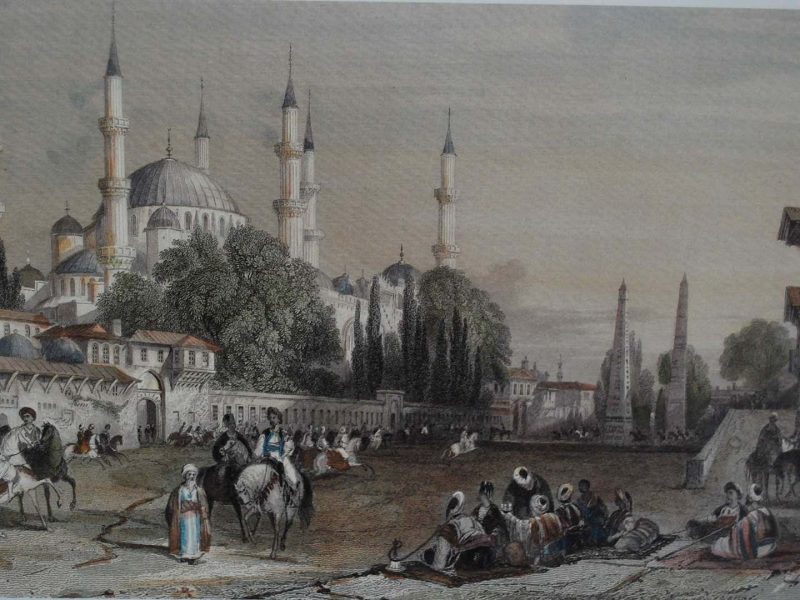Sultanahmet Square (Sultanahmet Meydanı) had been the center of three different emperor periods. Sultanahmet Square’s name was “Hippodrome” (Hipodrom) during the Byzantine and Roman Empires and it was called “Horse Square” (At Meydanı) during the Ottoman Empire. In this region, the most magnificent structures, like Serpentine Column, and Obelisk, were built by these empires thanks to this feature.
Hippodrome was in front of Blue Mosque (Sultanahmet Cami) in the Byzantine era. Car races were organized here. Race cars would turn around in the Spina area close to the Serpentine Column and the Obelisk. You can see many works on the Hippodrome wall, but horse statues catch one’s attention. After the Latins invaded, these statues were brought to Venice (can be visited in San Marco Square).
Some of historical monuments in Sultanahmet Square, are dedicated victories of famous wars. One of these is the one 300 Spartans involved. According to history, the Obelisk was built from red granite and has 3,450 years of history. This work stands on a pedestal. It was brought from Egypt in 390 and is known to have been made for the victories of Egyptian Pharaoh Tutmosis III in Asia in 1450 BC. Its embossings offer information about how it was built. Those stone structures, which were made in Egypt, were also used by Romans to decorate their cities. It is unknown when and how the Obelisk was brought to İstanbul from Alexandria. A 6-meter piece is missing today, and it was said that the missing piece was erected in a different area of the city.

Serpentine Column
The Serpentine Column, also known as Burmalı Column, is a memorial made from bronze prize by Greeks in the War of Platea in 479 BC. They dissolved these bronze and then made the Column. The monument is about 8 meters tall. This column was originally erected on the Temple of Apollo in Delphi then brought to İstanbul and erected in the middle of Hippodrome by Emperor Constantine in 324. There were heads of snakes in the monument until the 17th century. Later, only one head was found (in 1848) and it was taken to the İstanbul Archaeological Museum. In fact, the found part is really only part of the snake’s jowl.
There are some stories about how the snakes were broken off from the column. Evliya Çelebi tells one. According to his narrative, this Column has a magic that protects the city from the insects and crawling creatures. But since one of the snake’s jowl has been broken in 17th century, the magic has been broken. Thanks to this superstition , this monument has been protected from damage and preserved to date.

The Serpent column at the Hippodrome of Constantinople. The Column of Constantine. The Column of Marcian. All drawings from the work of G. Wheler.
Although the braided stone column is known by the name of an emperor named Constantinus Porphyrogenes, there is no definite information about who built it. It is about 32 meters tall and is in the middle of the Hippodrome in Sultanahmet. The column, which was made by carving the stones into different sizes, is located on the spine. Constantinus 7th repaired this column between 911-959. During the restoration, he overlaid the column with embossing that symbolized the success of his father, Basileios. There is a Greek inscription on one side of the marble cathedral and on the other side, a phrase about Constantinus 7th’s wish to create a gigantic monument.
It is thought that the column’s embossings were disassembled during the Latin invasion and were melted for coins. Clamp and nail marks are also visible on the stone. Some information suggests that these writings belong to 4th and 5th centuries, and that they were restored by Constantinus 7th. Very detailed descriptions about braided columns were prepared during the Ottoman period. It is possible to see that information and descriptions about this column in some written works that belong to the Ottoman Period. After the Sultanahmet Mosque was built, the braided column’s pedestal was laid under the ground level. In 1856, Charles Newton scratched around the monument’s surroundings and then encased it with iron bars. News stones were added in place of the falling stones over time.

